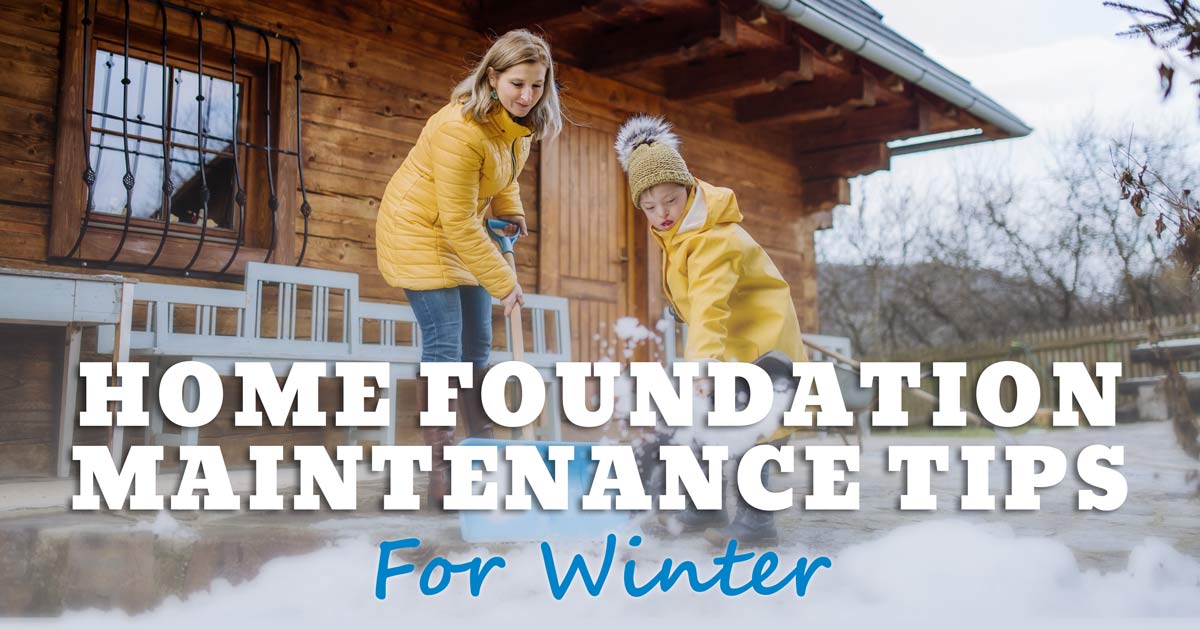512.291.0709
Mon - Fri: 9 AM - 11:30 AM
12:30 PM - 4 PM
September 06, 2023

Historically, winter in Austin may not always bring heavy snowfalls and freezing temperatures, but that has been changing. Forecasts are anticipating another “unseasonably cold” winter ahead, with a major storm expected come January or February 2024.
The big freeze of early 2021 exposed many of the vulnerabilities of our region, particularly how unprepared our homes are for harsher winters. Burst pipes and ground frost heaves affected a large number of properties, resulting in costly repairs to both plumbing and foundation systems.
Preventing similar troubles this season will require a proactive approach. It’s wise to prepare now, taking a few precautionary measures to ensure that your home’s foundation will be able to stand strong against winter’s worst.
Before winter sets in, take a walk around your property and inspect your foundation for any visible cracks or damage. Small cracks can expand with the fluctuating temperatures, so it's best to address them early.
If you’re not confident you know what to look for, it’s always worthwhile to get a professional inspection from a foundation expert. They’ll be able to spot issues that aren’t apparent to the untrained eye, and give recommendations for solutions that will properly address the problem within your budget.
Austin is known for its occasional heavy rainfalls, even in winter. Your home’s drainage systems will need to be prepared for sudden surges.
Ensure that your home's gutters and downspouts are clear of debris, and that they direct water away from the foundation. This will prevent water from pooling around the base of your home, which can lead to foundation issues. If excess water is present at the time a freeze hits, the ice that forms could put tremendous pressure on your foundation, and worsen any existing damage.
The soil in Austin is often expansive clay, meaning it expands when wet and contracts when dry. This fluctuation can put a lot of stress on your foundation, especially after an especially dry, hot summer.
Consider solving the issue by using a soaker hose around the perimeter of your home, about 18” away from the edge. This will maintain a consistent moisture level in the soil, preventing the soil from going through large changes in volume. With the newfound soil stability, your foundation will be at a far lower risk of shifting through the winter.
To accurately track your soil’s saturation levels, you can use a soil moisture meter that is inserted directly into the ground. If you think you’re losing too much water to evaporation at the top, it may be worth blanketing the ground with mulch or other moisture-retaining cover.
Insulate any exposed pipes to prevent them from bursting. A burst pipe can lead to water damage, which can weaken the soil around your foundation, or even infiltrate foundation cracks with water, which may then freeze and expand.
Adding pipe insulation is fairly easy to DIY. Most home improvement stores sell lengths of tube insulation in various sizes. These can simply be opened up and snapped around your plumbing pipes, then secured with tape or metal bands. Be sure to get a snug fit, so that cold air cannot come between the pipes and the insulation.
Trees and large shrubs can absorb a significant amount of water from the soil. In drought conditions, they’ll work extra hard to draw as much moisture from the ground as they can. With Austin being in an exceptional drought, it’s important to consider the effect your plantings will have on the soil surrounding your foundation.
Local water restrictions are tight, so there isn’t much that can be done if your plants aren’t getting enough to drink. Removing plants that have too-high water demands may be the best way to reduce the chances that your soil’s moisture levels are dangerously depleted.
If you've noticed small cracks in your foundation, consider applying a quality sealant before winter arrives. This will prevent moisture from entering and causing further damage, allowing you to get through another season without the need for big repairs.
The cost for this treatment depends on the area you need to cover. A single, relatively small crack may only require one handheld tube of sealant, which could cost under $15. For broader treatments capable of covering most or all of the foundation’s exposed surface, the cost could be a few hundred dollars.
While Austin's winters are usually milder compared to other regions, the changing climate makes it crucial for homeowners to be vigilant about foundation care. By following these tips and being proactive, you can ensure that your home remains safe and secure throughout the winter months and beyond.
If you're unsure about the state of your foundation, or if you've noticed significant cracks or movement, it's always best to consult with a foundation specialist. Here at Douglas Foundation Repair, we provide expert advice and fixes tailored to your specific situation.
Contact us to schedule a thorough evaluation of your foundation. We’ll be sure to get you set for all of the challenges of the upcoming season.